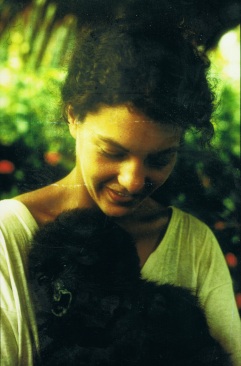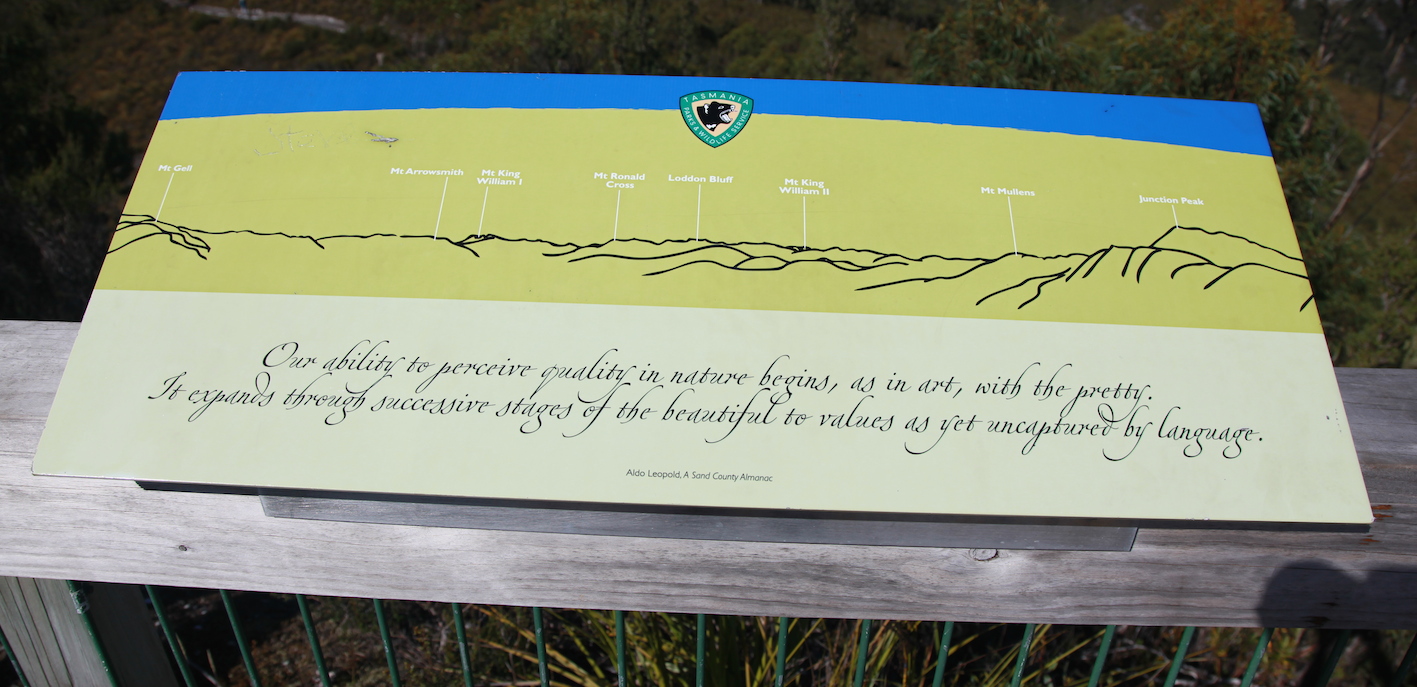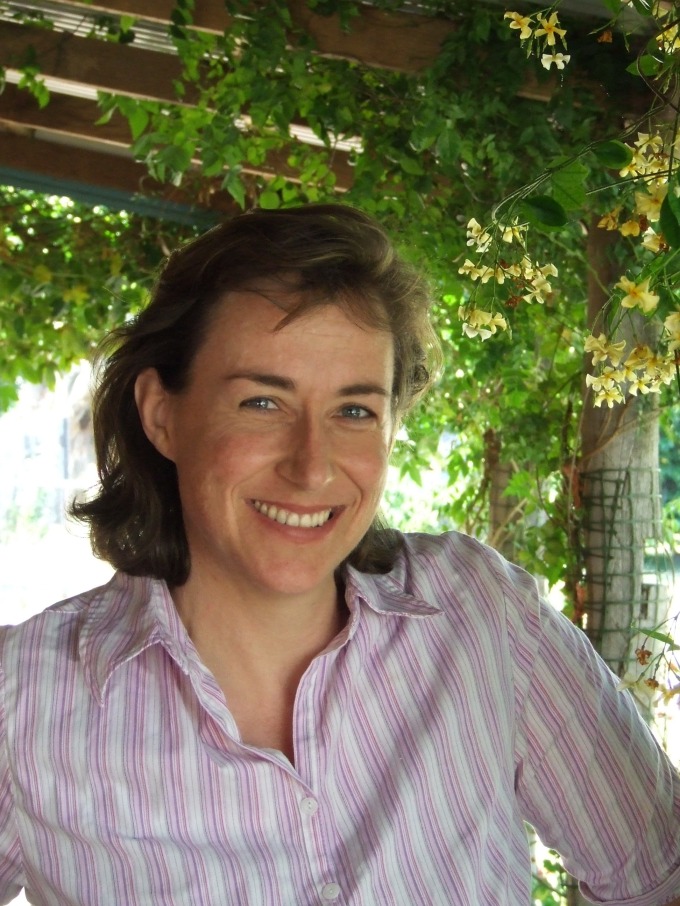In the 2019–20 summer, before the world turned inside out, I worked alongside expedition guide, historian and writer . Our weeks took us to the magical corner of the world that is the Antarctic Peninsula, South Georgia and the Falkland Islands. Nina is a generous guide and lecturer with a sparkling personality and a deep passion for nature. One day during the voyage, surf conditions at the Falklands meant that we three girls driving Zodiacs—Nina, myself and —could not safely leave our boats ashore; instead, we stood off out beyond the breakers until needed. As a guide, these quiet times are few and far between, treasured moments, rafting our boats together to chat and laugh and ponder our happy lot in life amidst spectacular surrounds. All of it a privilege.
As part of this series I invited Nina to share a little of her adventurous life, a favourite recent read, and her sparkling new book Antarctica. Over to you, Nina.
Someone recently described me as an unlikely author, and I think that’s a good way to describe it. I definitely wasn’t expecting to write a book when I pitched a couple of articles to the earlier this year. But that’s the way it worked out, and I’m pretty excited about it!
I spent about five years at University, studying everything from astronomy to psychology, politics, Mandarin and Chinese medicine, before finally graduating with an Arts degree in English. Which made sense, because I’d loved reading and writing since I was a kid. Come to think of it, I remember dreaming of writing for National Geographic. But who doesn’t want to write for them? I dismissed the dream as unrealistic, and trained as an adventure guide instead.
It’s been a wonderful and circuitous journey that led me to working as a historian on expedition ships in Antarctica, and I feel so grateful for the whole thing. After dropping out of history class at thirteen, I graduated high school. I spent many years drifting around taking all kinds of jobs: selling climbing gear in Sydney, working in bars and restaurants in the Yukon, serving beer in Wales and wine in Melbourne.
Writing became part of my professional life about ten years ago when I started writing websites, blogs and social media posts for small businesses. Eventually this expanded to preparing strategic communications plans and carrying them out, and I still do this today.
About five years ago I landed a job on an Antarctic expedition ship as a shop manager and trainee guide. I’d read about the expeditions of Scott and Shackleton, but once I was there I found myself entranced by the wild, intense human stories of the Antarctic—so many strange, little-known tales of humans at their limits. The politics was fascinating as well. I started reading voraciously, preparing presentations on some of the cool quirky stories I found.
I kept writing for myself in the background, and every now and then an opportunity comes up to write a great article on something I care about. This year, with the bicentenary of the first confirmed Antarctic sighting, seemed like a good time to share some Antarctic appreciation. I feel so fortunate that Australian Geographic took a chance on me and let me write this beautiful book about a place I love so much.
A recent adventure (with a touch of misadventure)



Last January I had a wonderful little jaunt in Patagonia. I hitched a ride to where the blue-grey Rio Electrico rolls over polished stones on its way down from the ice cap. There’s a delightful trail that starts here,weaving back and forth through the forest across hand-cut wooden bridges.
I stopped at Piedra del Fraile (Friar’s Rock), a little hut surrounded by colourful lupins. From here I turned south, to head into the mountains. I wanted to get up to Paso del Cuadrado (Square Pass), a pass that looks down into the deep glacial valley separating Cerro Torre from the jagged granite spires of the Chalten Massif.
A couple of days later I went up again, this time with an Italian woman I’d met in the hut on the rain days. The morning was kingfisher-blue and glistening – none of the ominous foreboding of the other day. We tramped up the hill, familiar now, and made it easily to Piedra Negra. Paso del Cuadrado beckoned, its distance oscillating the way high things do in the clear alpine air of the morning.
We skirted a frozen tarn and started hopping up a brilliant ochre-coloured spur to the base of the glacier. The snow on the glacier was sugary, and in borrowed crampons, our progress was slow. But at the top, the world fell away. We looked down breathlessly over the shadowy void between two mountain ranges, a groove scored by glaciers long-gone. The scale was impossible. No words came, so we grinned and drank a little maté instead, before heading down.
In what ways does your new book Antarctica inform our ideas about the frozen continent?
The last time Australian Geographic released a book about Antarctica was in the 1990s. I think this edition has come at the perfect time.
When we look at the human history of Antarctica, we tend to break it up into different eras: the sealing and whaling eras, the heroic era, the scientific era. But our era has yet to be named, and I suspect the decisions we make over the next few years may define it.
The past twelve months have been really significant for Antarctica. Last November (2019), a group of nations met in Hobart to discuss new protections for the oceans around Antarctica, but weren’t able to reach consensus on how this would work. In December we celebrated the 50-year anniversary of the Antarctic Treaty, the ground-breaking international agreement that sees Antarctica managed collaboratively by 54 states.
January 2020 was the 200-year anniversary of the first confirmed sighting of the continent by the Irish, Bransfield—or was it the Russian, Bellingshausen? The jury is still out. And through the summer of 2019–20, over 70,000 tourists visited Antarctica, almost twice as many as in the 2015–16 season.



Tell us something that this strange year has shown you
This year has shown me that we humans are kinder and more resilient than we might have thought. Most of us, in Australia at least, have lived through a period of growth, comfort, convenience and prosperity that may have no equal in human history. This year has dealt severe blows, restricting our freedoms and rocking the foundations of our steady, predictable trajectory. It has undermined a stability we took for granted, and yet there has been so much kindness, so much positivity circulating around the globe. So much rising up in the name of justice for the vulnerable, realism about the climate. Of course, it hasn’t all been happiness and joy, but I’ve been so heartened to see this swell of humanity in the world despite the challenging times we find ourselves in.
A favourite recent read?
I’m really enjoying by Andrea Wulf. It’s completely re-shaping my (admittedly patchy) understanding of natural history. Here’s a guy who has penguins, squids, mountains, even ocean currents named after him; at one point he held the record for the highest mountain ever climbed (Chimborazo, 6,267 meters / 20,561 feet, in 1802). He inspired Charles Darwin and was Goethe’s contemporary. How had I never heard of him?! The Invention of Nature is also extremely well-written, a really rollicking read.
Antarctica by Nina Gallo is published by and available from bookstores and online. Learn more about Nina at



 This small window into Rachael’s life introduces a talented poet and short story writer, arts reviewer and bookseller, who lives in the beautiful Adelaide Hills in South Australia. Rachael’s had an eclectic life, working as an archaeologist, environmental campaigner and seller of books both old and new. She has an Honours degree in Classical Archaeology, a Masters in Environmental Studies and a PhD in Creative Writing from the University of Adelaide. Rachael is the author of four collections of poetry, and I recommend all of them: (UWA Publishing 2018), (Picaro Press 2013) and the chapbooks Sliding Down the Belly of the World (Wakefield Press 2012) and (Garron Publishing 2015).
This small window into Rachael’s life introduces a talented poet and short story writer, arts reviewer and bookseller, who lives in the beautiful Adelaide Hills in South Australia. Rachael’s had an eclectic life, working as an archaeologist, environmental campaigner and seller of books both old and new. She has an Honours degree in Classical Archaeology, a Masters in Environmental Studies and a PhD in Creative Writing from the University of Adelaide. Rachael is the author of four collections of poetry, and I recommend all of them: (UWA Publishing 2018), (Picaro Press 2013) and the chapbooks Sliding Down the Belly of the World (Wakefield Press 2012) and (Garron Publishing 2015).


 Rachael: I love researching the ecological and cultural histories of the places we visit, so while driving through the Scottish Highlands I read a title that had been on my ‘must read’ list for a while. The Living Mountain by Nan Shepherd is a gorgeous piece of nature writing and deservedly a classic. The book is a loving, lyrical and ecologically precise account of the Cairngorm Mountains by a woman who spent much of her life exploring this harsh and beautiful landscape by foot. Shepherd wrote this book in the mid-1940s but it remained in her desk drawer until 1977, finally finding a publisher at the same time that other classics of the genre by male writers such as Matthiessen, Chatwin and McPhee were being published to great acclaim. As a lover of nature writing, reading this book was an absolute delight, not only as a poetic and intimate account of a wild landscape but as a landmark piece of nature writing by an extraordinary woman. Every time I used a Scottish five-pound note (which bears her portrait) it felt like I was paying tribute to a newly discovered literary heroine.
Rachael: I love researching the ecological and cultural histories of the places we visit, so while driving through the Scottish Highlands I read a title that had been on my ‘must read’ list for a while. The Living Mountain by Nan Shepherd is a gorgeous piece of nature writing and deservedly a classic. The book is a loving, lyrical and ecologically precise account of the Cairngorm Mountains by a woman who spent much of her life exploring this harsh and beautiful landscape by foot. Shepherd wrote this book in the mid-1940s but it remained in her desk drawer until 1977, finally finding a publisher at the same time that other classics of the genre by male writers such as Matthiessen, Chatwin and McPhee were being published to great acclaim. As a lover of nature writing, reading this book was an absolute delight, not only as a poetic and intimate account of a wild landscape but as a landmark piece of nature writing by an extraordinary woman. Every time I used a Scottish five-pound note (which bears her portrait) it felt like I was paying tribute to a newly discovered literary heroine. With my times away from home, my blogging pattern tends to be feast or famine. This week sees no nutritional lack. Despite spotty attendance I feel great personal reward in the interactions with readers and guests that maintaining a website generates. Imagine, then, a world with no internet, no email and no mobile coverage; then—as daunting as the prospect may be—picture me in that world for the next six months. Shortly, my partner Gary and I are off to remote
With my times away from home, my blogging pattern tends to be feast or famine. This week sees no nutritional lack. Despite spotty attendance I feel great personal reward in the interactions with readers and guests that maintaining a website generates. Imagine, then, a world with no internet, no email and no mobile coverage; then—as daunting as the prospect may be—picture me in that world for the next six months. Shortly, my partner Gary and I are off to remote 
 My first novel,
My first novel,  As a contemporary Antarctic novelist, I am not alone in this draw to the frozen south. Favel Parret’s has its origin in the history of Nella Dan, a former Australian Antarctic supply vessel. I posed the question to Favel: what attracts you to wild places?
As a contemporary Antarctic novelist, I am not alone in this draw to the frozen south. Favel Parret’s has its origin in the history of Nella Dan, a former Australian Antarctic supply vessel. I posed the question to Favel: what attracts you to wild places? Author Jesse Blackadder also travelled south to understand Antarctica. Her novel draws on the 1930s history of Ingrid Christensen, wife of a Norwegian whaling magnate. Ingrid and two unlikely female companions are each poised to become the first woman to land on Antarctica. Serendipitously, I recently met up with Jesse and asked which came first, the draw to Antarctica, or Ingrid’s story? Like me, like Ingrid Christensen, Jesse’s personal longing to experience Antarctica stretched back years, driven, in Jesse’s case, by images of wildlife and ice. Place first, story second.
Author Jesse Blackadder also travelled south to understand Antarctica. Her novel draws on the 1930s history of Ingrid Christensen, wife of a Norwegian whaling magnate. Ingrid and two unlikely female companions are each poised to become the first woman to land on Antarctica. Serendipitously, I recently met up with Jesse and asked which came first, the draw to Antarctica, or Ingrid’s story? Like me, like Ingrid Christensen, Jesse’s personal longing to experience Antarctica stretched back years, driven, in Jesse’s case, by images of wildlife and ice. Place first, story second. My new novel
My new novel 







 way on a yacht; naturally I was wondering what the heck I was doing and what awaited me on the high seas. Somewhat unexpectedly, the palm reader told me I would live surrounded by cows. Naturally I dismissed him as a phony but in fact he turned out to be right. Ever since I have been surrounded by cows — up in the Whitsundays for ten years and now down here in Bega on the far south coast of New South Wales. When I look up from my
way on a yacht; naturally I was wondering what the heck I was doing and what awaited me on the high seas. Somewhat unexpectedly, the palm reader told me I would live surrounded by cows. Naturally I dismissed him as a phony but in fact he turned out to be right. Ever since I have been surrounded by cows — up in the Whitsundays for ten years and now down here in Bega on the far south coast of New South Wales. When I look up from my JS: Oddly enough, when I was about twenty I woke up one morning with the thought in my head that I was going to be an editor, even though I didn’t have the first clue what an editor did. I was at uni in England at the time and the careers adviser laughed at me and told me I should become an accountant. Thankfully I came to Australia instead because I have the sneaky suspicion I would have ended up in jail for embezzlement. In Sydney I sent out my cv to every publisher in town, still completely ignorant of what an editor did. Thankfully James Fraser, then the publishing director at Pan Macmillan, offered me a job as his secretary. Whilst I was proving myself incompetent at that I was given the opportunity to read through the slush pile and then eventually to learn from two very skilled editors – Jane Palfreyman and Fiona Giles – who gradually trained me up into an editing role.
JS: Oddly enough, when I was about twenty I woke up one morning with the thought in my head that I was going to be an editor, even though I didn’t have the first clue what an editor did. I was at uni in England at the time and the careers adviser laughed at me and told me I should become an accountant. Thankfully I came to Australia instead because I have the sneaky suspicion I would have ended up in jail for embezzlement. In Sydney I sent out my cv to every publisher in town, still completely ignorant of what an editor did. Thankfully James Fraser, then the publishing director at Pan Macmillan, offered me a job as his secretary. Whilst I was proving myself incompetent at that I was given the opportunity to read through the slush pile and then eventually to learn from two very skilled editors – Jane Palfreyman and Fiona Giles – who gradually trained me up into an editing role.